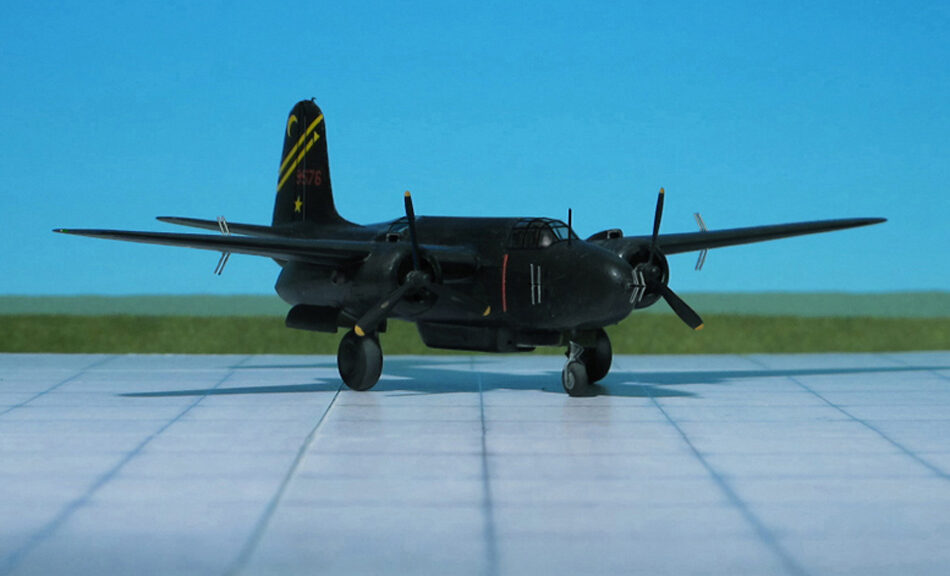TYPE: Night intruder and night fighter
ACCOMMODATION: Crew of three
POWER PLANT: Two Wright R-2600-23 Twin Cyclone radial engines, rated at 1,600 hp each
PERFORMANCE: 329 mph at 14,500 ft
COMMENT: The Douglas A-20 Havoc (company designation DB-7) is an American medium bomber, attack aircraft, night intruder, night fighter, and reconnaissance aircraft of WW II.
Designed to meet an Army Air Corps requirement for a bomber, it was ordered by France for their air force before the USAAC decided it would also meet their requirements. French DB-7s were the first to see combat; after the fall of France the bomber, under the servce name Boston continued with the Royal Air Force. From 1941, night fighter and intruder versions were given the service name Havoc. In 1942 USAAF A-20s saw combat in North Africa.
It served with several Allied air forces, principally the United States Army Air Forces (USAAF), the Soviet Air Forces (VVS), Soviet Naval Aviation (AVMF), and the Royal Air Forces (RAF). A total of 7,478 aircraft were built, of which more than a third served with Soviet units.
In most British Commonwealth air forces, the bomber variants were known as Boston, while the night fighter and intruder variants were named Havoc. The exception was the Royal Australian Air Force (RAAF), which used the name Boston for all variants.
The USAAF used the P-70 designation to refer to the night fighter variants.
In October 1940, the USAAC felt a need for long-range fighters more than attack bombers. As a result, sixty of the production run of A-20s were converted to P-70 night fighters, all delivered by September 1942. They were equipped with SCR-540 radar (a copy of the British AI Mk. IV), the glazed nose often being painted black to reduce glare and hide the details of the radar set, and had four 20 mm forward-firing cannon, each provided with 120 rounds, in a tray in the lower part of the bomb bay, while the upper part held an additional fuel tank with a capacity of 250 US gallons . In 1943, 13 A-20Cs and 51 A-20Gs were converted to Douglas P-70A. Differences were to be found in the armament, with the 20mm cannon package replaced by an A-20G gun nose with six .50 caliber guns installed, the SCR-540 radar installation being carried in the bomb bay with the vertical-plane, twin-dipole “arrowhead” transceiving antenna protruding between the nose guns. Further P-70 variants were produced from A-20G and J variants. The singular airframe P-70B-1 (converted from an A-20G) and subsequent P-70B-2s (converted from A-20Gs and Js) had American centimetric radar (SCR-720 or SCR-729) fitted.
The P-70s and P-70As saw combat only in the Pacific during World War II and only with the USAAF. The P-70B-1 and P-70B-2 aircraft never saw combat but served as night fighter aircrew trainers in the US in Florida and later in California. All P-70s were retired from service by 1945 (Ref.: 24).












